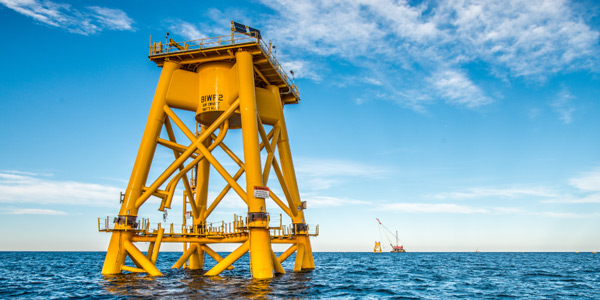By Rich Heidorn Jr.
Maryland regulators on Thursday approved two offshore wind projects totaling 368 MW, setting in motion what the state called the nation’s “first large-scale” offshore wind deployment.
The Public Service Commission awarded offshore renewable energy credits (ORECs) to US Wind and Deepwater Wind’s Skipjack Offshore Energy.
PSC Chairman W. Kevin Hughes said the approval “brings to fruition the General Assembly’s efforts to establish Maryland as a regional hub for this burgeoning industry.”
The PSC awarded the credits at a levelized price of $131.93/MWh for 20 years, beginning when the plants start generating.
US Wind’s 62-turbine, 248-MW project, 12 to 15 nautical miles offshore, has an estimated cost of $1.375 billion and is expected to begin operations in January 2020. It will connect to the grid at the Indian River Substation in Delaware.
Skipjack’s 15-turbine, 120-MW project, 17 to 21 miles off the coast, is estimated at $720 million and has a target in-service date of November 2022. It will connect to the grid at a substation in Ocean City, Md.
Conditions
The PSC’s order included more than two dozen conditions, including requirements that the developers create almost 5,000 direct jobs during the development, construction and operating phases of the projects.
The companies will be required to use port facilities in the Baltimore region and Ocean City for construction, operations and maintenance, fund almost $40 million in upgrades at the Tradepoint Atlantic (formerly Sparrows Point) shipyard in Baltimore County and invest at least $76 million in a steel fabrication plant in the state (Case No. 9431).
To address concerns about the ability to see the turbines from the shore, the order also requires US Wind to locate its project as far to the east of the designated wind energy area as practical. “Each developer also must take advantage of the best commercially available technology to lessen views of the wind turbines by beach-goers and residents, both during the day and at night,” Commissioner Anthony O’Donnell said.
The two companies must notify the PSC by May 25 whether they accept the conditions. The projects also are subject to the federal government’s approval of site assessment, construction and operations plans.
“As we review the details of the commission’s order, we thank the Public Service Commission for the trust that they have placed in Deepwater Wind,” CEO Jeff Grybowski said in a statement. “We look forward to continuing our dialogue with the Ocean City community about the Skipjack Wind Farm. Our goal is to build a project that the entire community is proud of.”
Deepwater Wind operates the first offshore wind project in the U.S., the 30-MW Block Island project off Rhode Island that began operations in December. (See Offshore Wind Industry Looks for Next Gust of Support.)
US Wind, a subsidiary of Italy’s Toto Holdings, thanked the PSC for the decision in a statement, saying “Maryland is now the undisputed national leader for offshore wind.”
“This marks the real start toward an extensive offshore wind industry that will one day soon stretch from Cape Cod, Mass., to Cape Hatteras, N.C., and provide as much as a third of the East Coast’s electricity,” the Chesapeake Climate Action Network said in a statement.
Cost to Ratepayers
An analysis conducted for the PSC estimated the ORECs will cost residential customers less than $1.40/month and boost rates for commercial and industrial customers by less than 1.4% — below the limit set by the legislature in the Maryland Offshore Wind Energy Act of 2013. The law allows offshore wind to comprise up to 2.5% of total retail electricity sales.
The projects are part of the state’s plan to reduce carbon emissions 40% by 2030 and will allow electric suppliers to replace some renewable energy credits produced in other states. Maryland’s renewable portfolio standard requires production of 25% of electricity from renewables by 2020.





